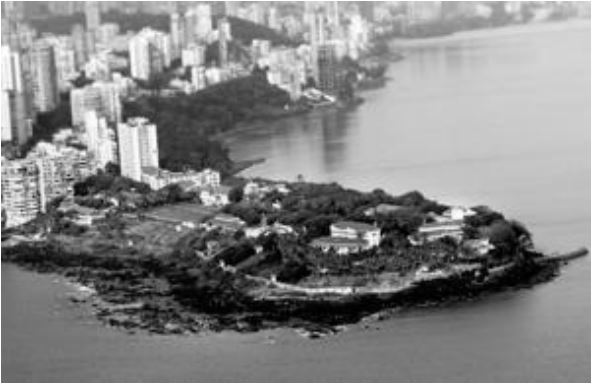THE SIDI OF JANJIRA

The Princely State of Janjira
The princely state of Janjira fluttered its red flag with the crescent moon until India won independence in 1947 and merged all the princely states with the union by the following year. The state of Janjira is noted as being among the smallest of the princely States in Menon’s “The Story of Integration of Indian Princely States.” However, compared to its size, the little state of Janjira played a disproportionately large role in history. The people manning the fort came from North Africa (Ethiopia/Somalia) and were followers of Islam. They were known to be the best sea fighters anywhere among the Muslim races and called themselves Siddis (a North African term of respect). While they were called Siddis in India’s west coast, they were known as Habshis in the rest of India.
Janjira was established in 1489. The state Janjira was located in the Konkan of Rangai District of Maharashtra. The area of Janjira was 981.61 Km². The state was ruled by Africans who were of a Sidi dynasty. In 1941, the population of Janjira was 110,388.
Janjira state included the towns of Murud and Shrivardhan, alongside the fortified island of Murud-Janjira. Murud-Janjira was known as the capital and the residence of its rulers.
The ruling family of Janjira is of Abyssinian origin. They came across the Arabian Sea to India and took service with their countrymen under the then Nizam Shahi Kings of Ahmadnagar around the 15th century. Most of them were appointed as captains of the island fortress after taking possession of Dandarajpuri and the island of Janjira in 1490. This appointment was done by Malik Ahmad Shah and in 1618, Sidi Surul Khan I secured the governorship of the island of Janjira. Another great highlight of the Ahmadnagar Sultanate was the capture of the fort of Janjira which played a great role in the resistance of the repeated attacks of the Maratha Empire.
Janjira also combined forces with the Ottomans to route a Portuguese fleet in 1587 at Yemen. After this event, Janjira continued playing a great role in the resistance of the Portuguese influence in that region. An ironic event happened during this period whereby the Portuguese, British and Dutch started to label certain Indian mariners as pirate, who were acting legitimately to defend the trade rights of the polities native to the area of Indian Ocean.
Janjira state had always faced rivalry with the Marathas especially with the Angrias, a Maratha Koli family with forts and ships. In 1733, the Maratha Empire took aggressive action and embarked on a campaign against the siddis of Janjira. They couldn’t take the Janjira fort but captured much of the surrounding area.
Most of the attacks on Janjira by the Marathas ceased with the introduction of the British rule. Janjira became a part of the Bombay Presidency around 1799.
The head of the state was called Wazir at that time. British Raj officially recognized the title “Nawab” in 1803. Mughal Emperor Aurangzeb conferred the title of Nawab. The siddhis were the royal family of that state. They are also known as ‘Habshi.’ A majority of the African rulers of this state were Muslim. Janjira was a Muslim state at that time.